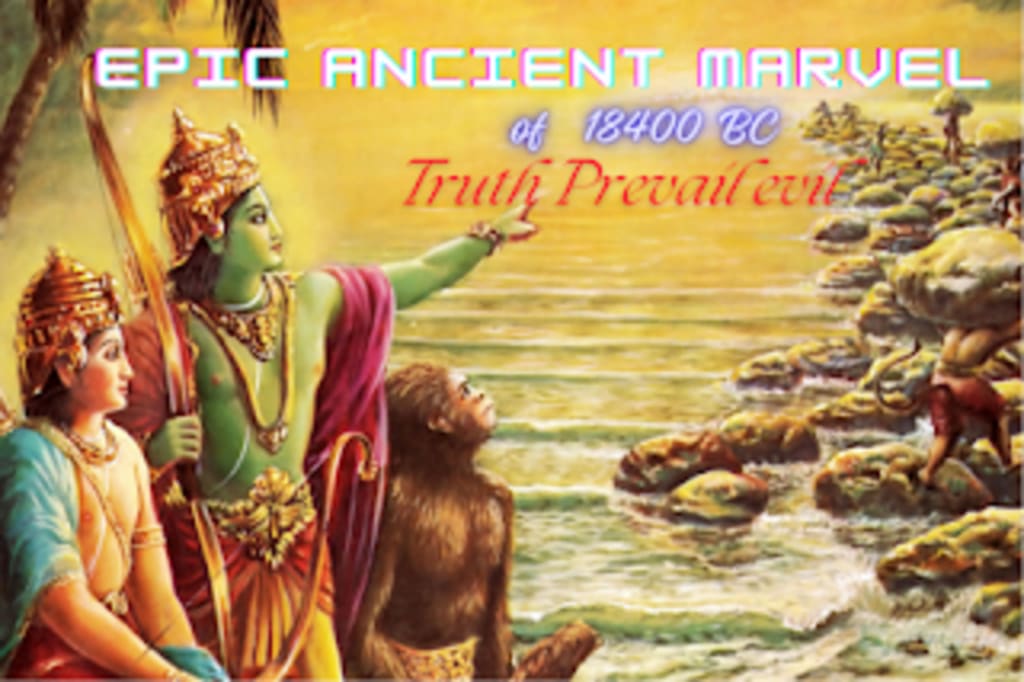Ram Setu An Epic Ancient Marvel
Ram Setu is not just a bridge

Introduction:
Imagine a bridge that connects history, mythology, and faith. Visualize a colossal structure that has captivated the imagination of millions, inspiring tales of epic battles and divine intervention. Step into the realm of Ram Setu, an engineering marvel that has withstood the test of time and stirred the souls of generations. In this blog post, we embark on a journey through the annals of history to unravel the secrets of Ram Setu, also known as the Bridge of Rama. From its mythical origins in Hindu scriptures to its existence as an ancient structure of incredible significance, Ram Setu stands as a testament to human ingenuity and spiritual devotion. Join us as we dive deep into the realms of an epic ancient marvel and connect the dots that bridge the past with the present.
Ram Setu: A Bridge of Legends
Ram Setu, also referred to as Adam's Bridge, is a structure shrouded in legend and surging with divine energy. According to Hindu mythology, it holds a pivotal place in the epic tale of Ramayana. This remarkable bridge is believed to have been built by Lord Rama and his army of Vanaras (monkey warriors) to reach the island of Lanka, where Rama's beloved wife Sita was held captive by the demon king Ravana. As the primary keyword, Ram Setu encapsulates the essence of this legendary bridge, serving as a portal between two worlds - a bridge connecting history, faith, and engineering wonders.
The significance of Ram Setu surpasses its mythical origins. For millions of devotees, it stands as a symbol of faith and devotion, a living testament to the divine interventions within the human realm. Hindu pilgrims undertake arduous journeys to witness the magnificence of Ram Setu and imbibe its spiritual energies. This bridge, steeped in legends, echoes with chants, prayers, and timeless tales of love, bravery, and righteousness.
While the origins of Ram Setu can be traced back to Hindu mythology, it has also found mention in various historical accounts throughout the centuries. Early explorers and chroniclers have left behind intriguing descriptions of this awe-inspiring bridge. Some argue that Ram Setu is a natural formation, while others propose that it bears the profound stamp of human craftsmanship. The controversy surrounding the origin of Ram Setu has led to significant debates among historians, archaeologists, and scientists.
It is the exploration of contradictory theories and historical accounts that adds depth to our understanding of this ancient marvel. From the writings of the ancient Greek geographer Ptolemy to the records of the Chinese traveler Xuanzang, Ram Setu has captured the curiosity of many adventurers throughout history. Whether it be as a natural bridge formed by shifting sands or a man-made structure aligned with the divine, Ram Setu continues to intrigue both the faithful and the skeptics alike.
Beyond the realms of mythology and history, Ram Setu encompasses a marvel of engineering. Its formation arises from the intricate interplay of geology, geography, and the forces of nature. Located in the Palk Strait between India and Sri Lanka, this ancient structure is composed of limestone shoals that stretch over 30 kilometers. These limestone shoals are believed to have been created by sedimentation and deposition over thousands of years.
One of the remarkable aspects of Ram Setu is the chain of coral reefs that run along its path, connecting the Indian subcontinent to the island of Sri Lanka. These reefs act as natural barriers, protecting the bridge from the relentless waves of the Indian Ocean. The unique combination of limestone and coral reefs has bestowed Ram Setu with its extraordinary strength and resilience, making it a witness to countless epochs of human history.
Scientific research suggests that the formation of Ram Setu occurred through the gradual accumulation of sediments carried by rivers and ocean currents. This process, spanning millennia, has resulted in the creation of a bridge that today stands as a testament to nature's artistry and unyielding forces. Whether considered a product of divine intervention or a masterpiece of natural engineering, Ram Setu is an undeniable wonder that stands as a bridge between nature and mankind.
Ram Setu's influence on Indian civilization stretches far beyond its mythical and religious dimensions. Throughout history, it has shaped the destiny of nations, impacted trade routes, and influenced art and architecture. Maritime explorations, cultural exchanges, and the spread of religious beliefs owe their existence, in part, to the presence of Ram Setu.
The ancient kingdom of Lanka, present-day Sri Lanka, owes its historical connection to the Indian subcontinent to the existence of Ram Setu. In ancient times, this bridge served as a crucial link for maritime trade, facilitating travel between the Indian kingdoms and the island of Lanka. The strategic importance of Ram Setu led to the establishment of thriving ports and the development of flourishing civilizations on both sides of the bridge.
Art and architecture have been deeply influenced by the presence of Ram Setu in Indian culture. Temples, sculptures, and paintings across India often depict Lord Rama, his army of Vanaras, and the magnificent bridge they constructed. These artistic representations not only uphold the legends and tales associated with Ram Setu but also inspire devotion and reverence among the faithful.
From regional folklores to popular TV adaptations, the magnificent tales and enduring legacy of Ram Setu have found their way into the hearts and minds of countless generations. This ancient marvel continues to be a source of awe, appreciation, and devotion, resonating with people across diverse cultures and backgrounds.
About the Creator
Enjoyed the story? Support the Creator.
Subscribe for free to receive all their stories in your feed. You could also pledge your support or give them a one-off tip, letting them know you appreciate their work.





Comments
There are no comments for this story
Be the first to respond and start the conversation.